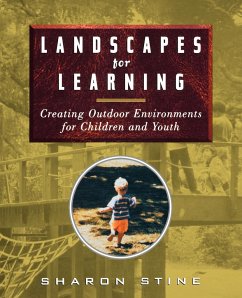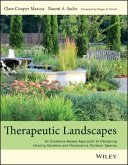Ask people what they remember most about the physical surroundings of their childhood and they're likely to describe a special place out of doors--a school yard, a patch of woods, a community garden. For it is outside space that is most conducive to the ebb and flow of spontaneous activities, offers rich and often surprising sensory input, and provides endless possibilities for exploration. If the classroom is the place where children are taught, the outdoors is where they learn on their own. A growing legion of landscape architects is exploring and exploiting the ability to create outdoor environments that optimize the learning experience and mirror the ideas, values, attitudes, and cultures of those who inhabit them. In Landscapes for Learning, Dr. Sharon Stine presents 11 case studies of the very best of these design projects from around the world. Her findings describe not only design concepts and end results--rich outdoor learning environments--but, more importantly, the processes that led to the creation of these environments. She examines the roles of designers, teachers, and the children themselves, and how their interaction affects the planning, building, and use of the space. Dr. Stine shows how the most successful designs address the needs of both the children whose job it is to "mess up" the space and the adults who supervise them. She defines nine pairs of contrasting elements that are essential to any play environment and uses these both as the basis for her analyses of particular environments and as the foundation of a common language that designers and educators can use when developing a new design. She also addresses the issues of safety and security and demonstrates that learning environments can be stimulating, interesting links with the natural world and safe places for children to run free. Landscapes for Learning is the ideal source for landscape architects, architects, planners, school administrators, and teachers who want to collaborate in the development of useful, intriguing outdoor environments for students in day care, preschool, elementary school, junior high, and high school. Discover the keys to creating delightful, stimulating, challenging, and educational outdoor environments for children and youth This unique volume explores the vital and growing movement that is transforming school yards, day-care facilities, and museum grounds around the world. Dr. Sharon Stine presents detailed analyses of a wide variety of outdoor environments for children and the principles and processes that enabled their design, creation, and ongoing operation. Special features of this book include: * Eleven case studies of outstanding outdoor environments for children and youth--both contemporary and historical * More than 140 photos and line drawings that illustrate the application of specific design principles * Nine pairs of contrasting elements essential in any play environment that form the basis of a shared language for the design and analysis of outdoor learning environments * In-depth analyses of the development and evolution of outside space in two schools over a period of 80 years * And much more
Hinweis: Dieser Artikel kann nur an eine deutsche Lieferadresse ausgeliefert werden.
Hinweis: Dieser Artikel kann nur an eine deutsche Lieferadresse ausgeliefert werden.








